Women Empowerment and Livelihood Opportunities through Homebased Handicraft Activities
Shumaila Murtaza1, Farhan Ahmad2*, Saba Gul3, Ali Sher4, Hafsa Hayat4 and Seemab Gul5
1Training Coordinator, Food for Assets (FFA)-Cash Based Transfers (CBT) Project, District Kurram, KPK Pakistan
2Livelihood Officer, Food for Assets (FFA)-Cash Based Transfers (CBT) Project, District Kurram, KPK Pakistan
3Social Organizer, Food for Assets (FFA)-Cash Based Transfers (CBT) Project, District Kurram, KPK Pakistan
4Monitoring and Evaluation Officer, Food for Assets (FFA)-Cash Based Transfers (CBT) Project, District Kurram, KPK Pakistan
5Reporting and Implementation Manager, Food for Assets (FFA)-Cash Based Transfers (CBT) Project, District Kurram, KPK Pakistan
Submission: October 23, 2021; Published: November 08, 2021
*Corresponding author: Farhan Ahmad, Livelihood Officer, Food for Assets (FFA)-Cash Based Transfers (CBT) Project, District Kurram, KPK Pakistan
How to cite this article: Shumaila M, Farhan A, Saba G, Ali S, Hafsa H, et al. Women Empowerment and Livelihood Opportunities through Homebased Handicraft Activities. Ann Soc Sci Manage Stud. 2021; 6(5): 555699. DOI: 10.19080/ASM.2021.06.555699
Abstract
So as to improve their social and health position and encompass them in progressive accomplishments. Empowerment as delegation of supremacy to somebody has been a way to enrich individual and work life value of woman in current decades. Higher education and livelihood are effective mechanism to women empowerment, but culture roles and inspiration can’t be denied. Cultural heritage personified in traditional artistries is an essential measure of any state that reveals the culture and radiation of the region. The handicrafts sector shows a vigorous character on income and generations of employment and has also been familiar globally due to poverty lessening. In KP’s culture, it is habitual to clarify some craftworks to girls. It is common in educated and illiterate families, but illiterate families focus more on it. The joint crafts skilled to girls are embroidery, Mezari, sewing, quilts, applique, crochet, knitting etc. This paper recognizes how to empower women of Village Aka Khel (Upper Kurram) from poverty over creative industry of handicrafts. Numerous recommendations are established for how creative industry can contribute in empowerment of women. The limitation of this research is to conduct at innovative industry. Further qualitative research at other types of industries is necessary to explore application of such recommendations.
Keywords: Empowerment; Homebased; Handicraft; Livelihood
Abbreviations: World Food Program (WFP); Foundation of Rural Development (FRD); Scaling-Up Nutrition (SUN); Village Development Committee (VDC)
Background
District Kurram is in the Kohat Division of Khyber Pakhtunkhwa (KP). The term Kurram originates from the Kurama river that itself comes from the Sanskrit name Krumuḥ. Until 2018, it was an agency of FATA, with merger to KP, it became a district. Geographically, it covers the Kurram region which is a valley in north-western portion of Pakistan. Most of the population is Pashtoon and the central religion is Islam (Sunni and Shia). Main existing tribes in Kurram are Muqbil, Paracha, Para Chamkani, Bangash, Orakzai, Turi, Masoozai, Zazai, Mangal, Hazara, Khoshi and Ghilzai tribe. Kurram district, located nearby the Afghanistan boundary, is one of the familiar districts in the Ex-FATA. The 12th century report of Kurram, as declared in the ‘’Rig vide book’’ exposes that a Hindu spiritual leader called Karma later on the name Kurram River initiated. After the river, the name therefore felt Kurram valley. The district lies between 33.20 to 34.03 North latitudes and 69.50 to 70.45 East longitudes. District Kurram is enclosed in the west and north by provinces of Afghan (Paktia and Ningarhar) respectively, in the East by district Orakzai and Khyber, in the Southeast by Hangu and in the South by North Waziristan. The district is 115 Km extended with an entire area of 3380 squares Kilometer.
Introduction
Handicraft goods are those made by artisans either by hands, or such types of hand tools. Handiwork is one of the chief exports sections of certain countries like Indonessia and Bangladesh Handicraft goods will more entirely support enriching productivity that will ultimately raise ODP and desired economic growth, which will be accomplished easily believing to warrant the women financial empowerment [1]. Handiworks are traditional by nature and by means of their primitive implements, individuals create these to practice in their day-to-day life. It should be recognized that most of the time handiworks have an aesthetic outlook and creative significance [2].
Kurram is associated underneath developed area despite having treasures of resources, ladies are on in all of them particularly the experienced ones. Women would contribute to economic development rather taking part in a passive role, their dependence on welfare program and philanthropic gift are additionally bated. The study sought-after to spot issues, weaknesses and opportunities that have an effect on “Mezari” business and want to be worked on. Data were collected through qualitative interview methodology from the sample of seventy-four handicrafts girls in village Aka Khel Kurram District. The business in Kurram is found to be at low ebb and needs a heavy thought.
Method
A meager quantity is earned by the ladies. Lack of awareness and education is found to be the most hurdle behind their nonprofitable ability [3].
Based on these facts, the empowerment of ladies is that the need for District Kurram to enhance the economic standing of society. Ladies aren’t a burden or obstacle within the development, however it became on in every of the potential and assets underneath construction, Additionally, reducing the unemployment rate might increase the experience or ability of those ladies.
Objectives
i. To understand their economic contribution
ii. To recognize the handicrafts distribution
iii. To offer some valuable recommendations
iv. Awareness relating to livelihood through handicraft
v. To unearth women’s national level empowerment through handicrafts activities
vi. To establish the association between women’s economic empowerment and role of handicraft activities
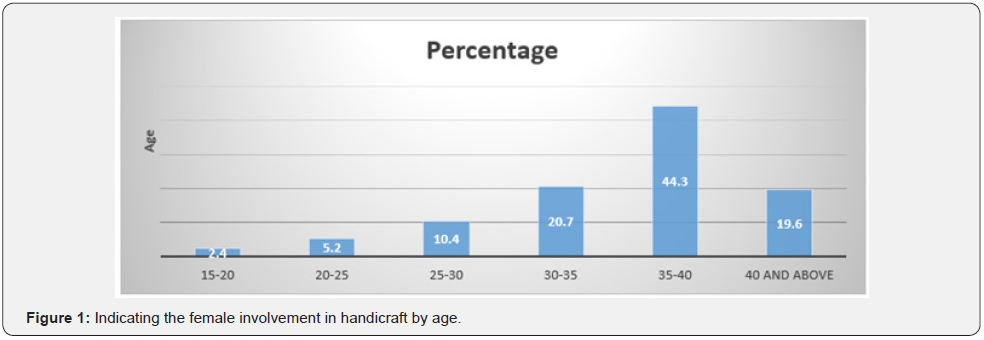

The project “To support most food insecure population of newly merged districts (NMDs) through cash based mostly transfers in district Kurram of KPK” was command at District Kurram to support the livelihood aspects of the peoples of the Kurram by providing the assets which will generate long run livelihood. The project was enforced by Foundation of Rural Development (FRD), funded by World Food Program (WFP). To ensure awareness concerning livelihood and women empowerments trainings were conducted on various topics like Mezari work, Fuel efficient stove, quilt making and mushroom cultivation. Women were trained accordingly to executed such activities for their authorization. Females were engaged in several activities like Mezari work and Fuel efficient stove in order that they will guarantee learning by doing development (Figures 1-3).
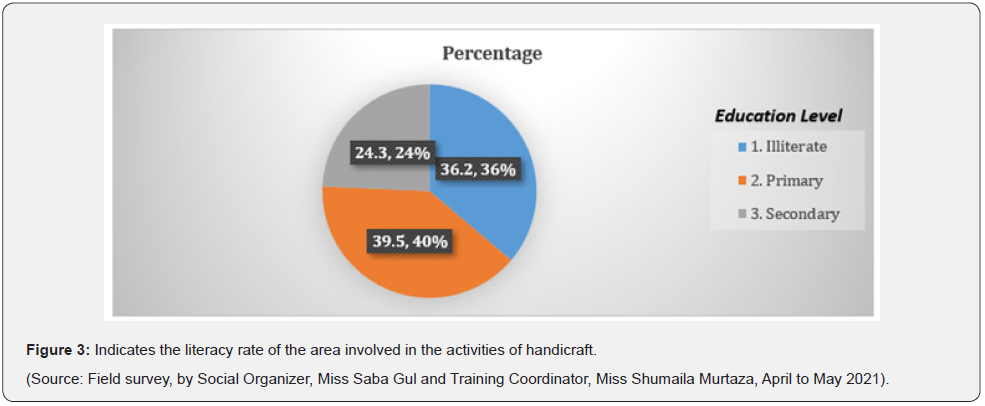
Training and Learning
Constant training and learning for the entire organization is a critical component of empowerment. This begins with reeducation of senior management and spreads throughout the organization. In some ways, this resembles a learning organization that is constantly striving to identify and learn new skills in order to improve processes [4].
As a result of social and cultural norms and practices, women and girls face barriers to humanitarian assistance and services. Girls’ education continues to be a challenge, especially in areas bordering Afghanistan (the newly merged regions of Khyber Pakhtunkhwa - KP) and Baluchistan. There is a strong link between girls’ educational attainment and malnutrition in general (stunting, wasting, and underweight). In the United States, 7.3 million primary school-age children are not enrolled, with girls accounting for 57% of the total.
FRD is also collaborating with the World Food Program (WFP) to build district capacity to develop multi-sectorial policies and strategies that are fully aligned with the Scaling-Up Nutrition (SUN) approach, to collaborate on food security research initiatives, to participate in cash-based welfare programs, and to provide expertise on livelihood programs (Figure 4). The village chief, deputy chief, village secretary, village Women’s Union representative, village elders, and youth members comprise the Village Development Committee (VDC). Through their membership in the Village Development Committee (VDC), they oversaw the identification and selection of beneficiaries under the FFA CBT schemes intended for rural development, and they ensured the proper implementation of the village’s FFA CBT programs. The selection criteria for participation in FFA activities also aided in the inclusion of vulnerable households and women. Significant efforts have been made to design gendersensitive interventions and to allocate sufficient resources. Mezari training was designed specifically for women and female-headed households. The majority of females in the training session were pleased with the process used to identify them as well as the activities that benefited them. The World Food Program (WFP) and the Foundation for Rural Development (FRD) have started capacity building trainings in Kurram to empower unskilled village women to make “Mezari” crafts. The women were first introduced to skill training, then to capacity building training. So far, the trainer has trained three groups of 74 participants (Figure 5).
The venture has played a significant role in empowering women who are now self-assured and want to be financially independent. Women were given the opportunity to hone their craft, learn new skills, and learn how to market themselves. The primary goal is to empower the most vulnerable women, such as widows, poor women, and women who rely entirely on others. The majority of these women are extremely talented, but they have no idea how to make their designs more artistic and contemporary, or how to market their products.
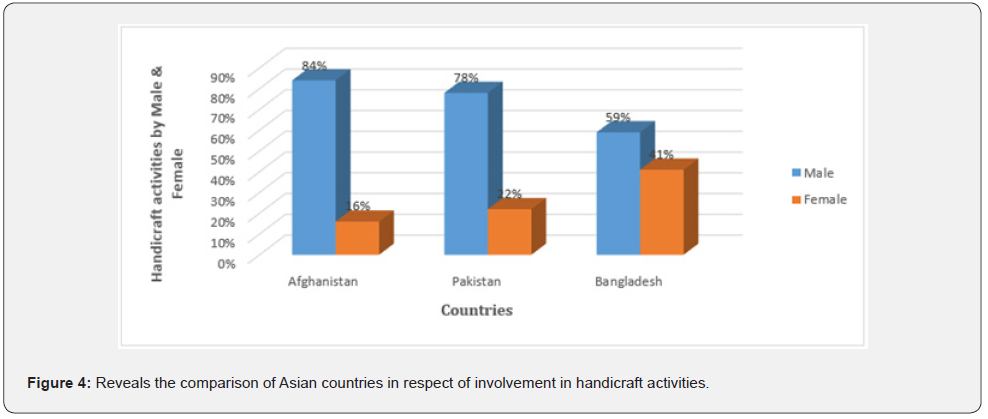
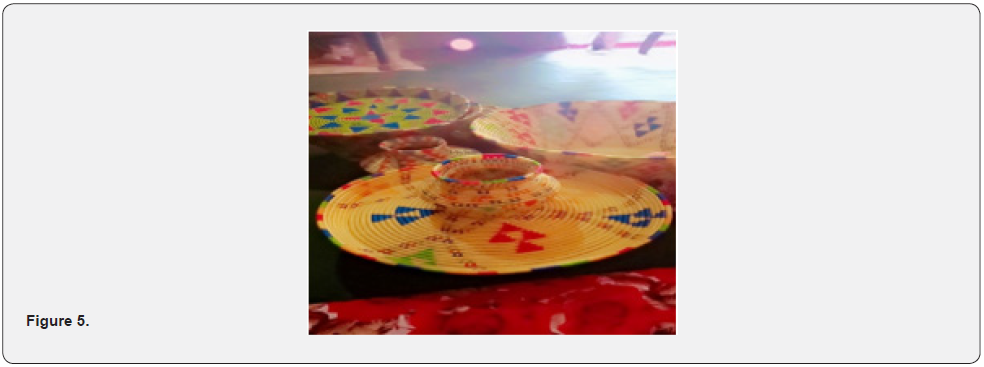
Role Models
Leaders at all levels of management structure play exemplary roles in the implementation of change processes, where other members of a team/department or organization are encouraged to observe and emulate these leaders’ attitudes and behavior [4].
i. Nasima Bibi is a hardworking Aka Khel handicraft entrepreneur. A mother of six daughters, her husband is a daily gambler, and she suffers from serious health problems. Nasima Bibi is a courageous woman who continues to fight poverty and raise the living standards of rural poor women by providing them with opportunities to earn a decent living. “I want to provide more income for my family while also educating and empowering my daughters. My three daughters are in school, and I manage my kitchen with ease.” Fatima lives in Aka Khel village. Her husband is a heart patient, and she has three daughters and two sons. Her family is supported by her handicraft skills. From Mezari, she creates baskets, hand fans, trays, grain bins, and hotpots. She used to sell Mezari products and serve the family by providing food, education and husband expenses in the hospital (Figure 6).
ii. Watan bibi daughter of Nabaat khan, age 40 years lives in village Narari, District kurram of Khyber Pakhtunkhwa. She has three sisters and are married. During interview she said that “ It was a black day in my life when I hear d that my father is no more and all the responsibilities were on my shoulders, I don’t have a brother and staying alone in this patriarchal society is a big challenge’’ After the death of her father now she is living alone. Father of watan bibi used to make mazri rope and trained her daughter too. After the death of her father she continued the trend to earn livelihood. The villagers also helped her with the basic needs.
I had very difficult time, I used to sell mazri rope of RS. 2000 per month which was not enough to meet the needs of the family. WFP aided me with RS. 15000. From this amount I brought my very first clothes, stuff for home and paid back the RS. 4000 in loan to the shopkeeper. I have a very serious toothach issue and with the next installment I am planning to solve this problem. The FRD team registered her in the skilled training program funded by WFP with the help of FRD during village assessment. She was guided and motivated further by the field team on mazri products and video tutorials. She quickly learned the skills and made a veriety of mazri products (Figures 7a & 7b).

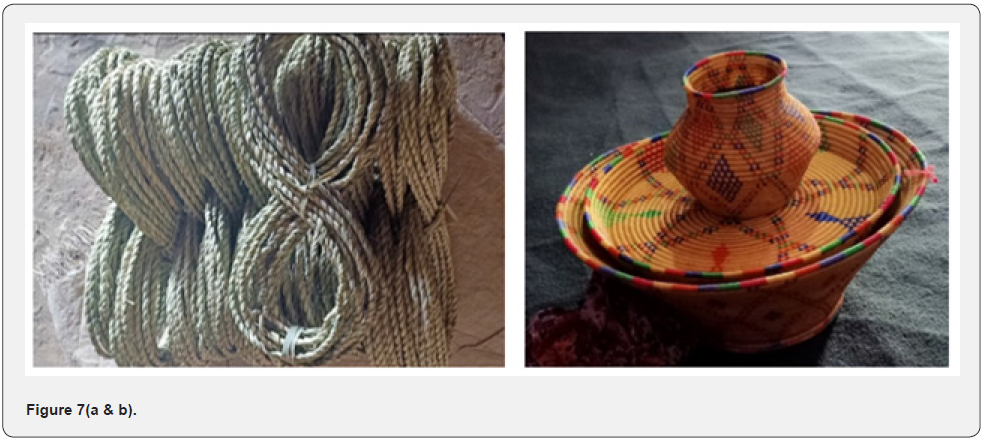
Women’s great powers of creativity, resilience, and extraordinary tales have created stories that exemplify the ultimate force of womanhood while bringing beauty to their special life. Females are working tirelessly to structure their thoughts and superpowers as they struggle to make ends meet and fiercely create history in their own culture. Several approaches taken by tenacious female entrepreneurs have created strong waves in the business community thus laying a solid base of limitless creativity. We’ve compiled a list of exceptional female entrepreneurs who have gone on to become prominent figures who can serve as role models for any aspiring entrepreneur.
iii. Lasmeen Bibi, 28 years old from Village Shegai in the Central Tehsil of Kurram
She stood behind her family through thick and thin. She believes that you can conquer anything you want with the right mindset and goals. Her Husband is mentally disturb, because of that he used to stay at home mostly rather than to go for work. According to her, since her husband disturbed mentally she focused more on family. She is supporting her two daughters and husband by selling the eggs in nearer homes.
The FRD female field staff during the assessment activity under the FFA-CBT project, identified and proposed the Lasmeen Bibi for Mazari work in order to give some relief from our organization side. The females included in the VDC were much happier and agreed on the selection of Lasmeen Bibi for Mazari work as they know well about the current situations of her family. FRD female staff registered Lasmeen Bibi for Mazari work to be completed in 3 cycles for which she will be paid of 22,500 PKR (7,500 PKR per cycle).
She bought a goat soon after receiving a cash of 22,500 to support her family more in respect to sell milk. She added that I am much happy with the FRD female staff for encouraging me to do more. The Cash provided was utilized much effectively in term to support my family. I will use to make such items from mazari to sell it in market. The mazari product are much costly and will benefit me in getting income to support my two daughters and husband “Lasmeen Bibi declared and thanks FRD female field Team” (Figures 8a, b & c).

Discussion
Women are not a burden or an impediment to development; rather, they have become one of the potential and assets under construction. One way to increase women’s empowerment is to create small and medium-sized businesses to absorb the labor of unemployed women. In addition to lowering the unemployment rate, these women’s expertise or skill could be enhanced [5]. Creative industries are one of the activities that, in addition to increasing women’s empowerment, can improve society’s economic system [6]. Education and capacity building are critical components of the empowerment process. Women who are educated and exercise play an important role in family decision making. Formal education is essential for developing the skills and abilities that an individual requires to feel competent. [7]. Educated women are more likely to have control over their earning. Education, employment and earning increase women financial independence therefore they are regarded as powerful means of empowerment.
Handicraft is one of Bangladesh’s most important exports. Handicrafts products will be more exclusively useful for increasing productivity, which will ultimately raise GDP and ensure that the desired economic growth is easily attained while ensuring women’s economic empowerment. Handicrafts are, by definition, traditional. People make these to use in their daily lives by using their primitive instruments, their hands. It should be noted that most handicrafts have an aesthetic and artistic value [8] (Figure 9)..
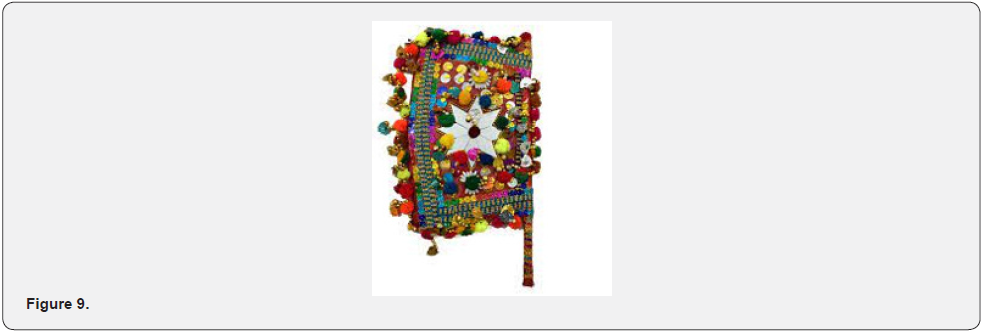
The United Nations designated 2001 as Women’s Empowerment Year. In the same year, the National Policy for Women’s Empowerment was developed, which recognized the causes of gender inequality as being related to social and economic structure. Since 2008, the NGO has taken initiatives to empower women who work in various crafts, particularly potters and bamboo workers, by replacing these craft works with Terracotta and Bamboo works in response to market demand [9] (Figure 10). According to Jahan & Mahmud [10], women’s empowerment is the most pressing and visible issue in the world today. It is not only important for women’s development, but it is also a necessary first step toward addressing the world’s larger problems. The goal of women’s empowerment is to increase women’s ability to control their own lives, positions, and environments to a greater extent [11-13] (Figure 11).
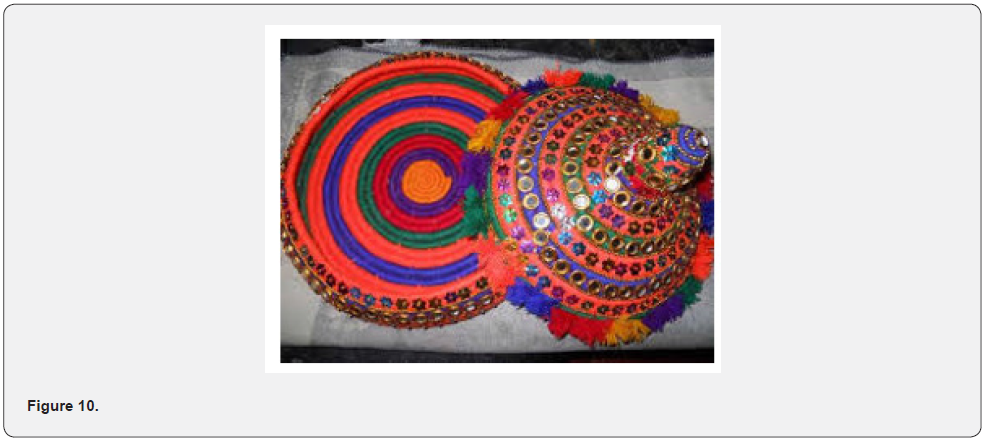
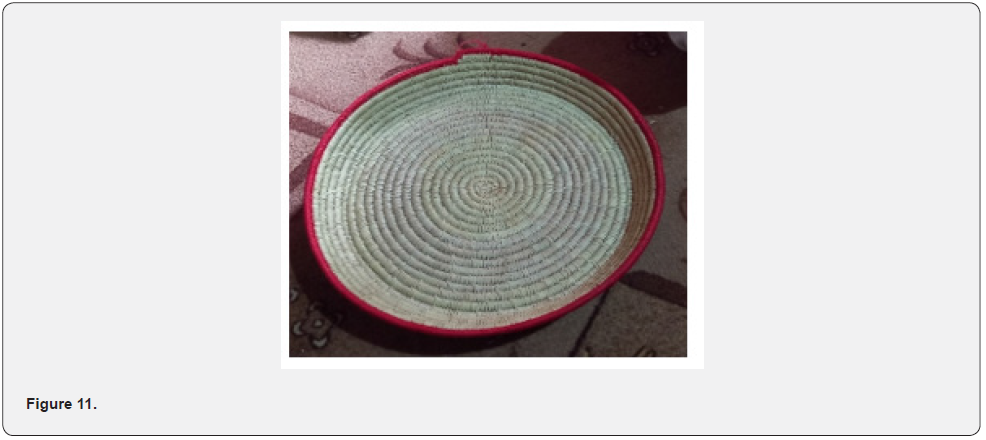
Conclusion
Handicrafts and small business are two ways Kurram District residents can boost their economies. There are many women in Kurram who do not have a job but are terrified of the local economy. Women’s empowerment in small and medium-sized businesses is an appropriate solution for improving Kurram’s women’s skills and abilities, and the work can also improve their lives.
References
- Spreitzer GM (1996) Social structural characteristics of psychological empowerment. Academy of Management Journal 39(2): 483-504.
- Sultana B, Zaaba ZB & Umemoto K (2010) Women’s Empowerment Through the Development of Micro Entrepreneurship in Rural Bangladesh. Soc Sci 5(1): 1-9.
- Sarker AS, Rahman MH (2007) The emerging perspective of governance and poverty alleviation: A case of Bangladesh. Pub Organiz Rev 7: 93-112.
- Nesan L, Jawahar, Gary D Holt (2002) Assessment of Organisational Involvement in Implementing Empowerment. Integrated Manufacturing Systems 13(4): 201-211.
- Ariane Z (2011) Indonesia Women Struggle Against Poverty, Discrimination and Exploitation, Direct Action for Socialism in 21st Century.
- Gbgindonesia (2011) Services, Indonessia creative industries, global business guide.
- Gholipour A, Rahimian A, Mirzamani A, Zehtabi M (2010) Impact model of women’s empowerment. international business research 3(1): 57-65.
- Afiya Sultana (2012) Promoting Women’s Entrepreneurship through SME: Growth and Development in the context of Bangladesh. IOSR Journal of Business and Management pp. 18-29.
- Pushpalatha M, Aseervadam M (2014) NGO: Women Economic Empowerment through Bamboo and Terracotta Work- A Study.
- Jahan, Raihana Akter, Reza Hasan Mahmud (2002) Source of Women’s Empowerment in Bangladesh: An Analysis”. Quarterly Journal of Bangladesh Public Administration Training Centre 23, pp. 45-54.
- Afrin S, Islam N & Ahmed SU (2008) A multivariate model of micro credit and rural women entrepreneurship development in Bangladesh. Int J Bus Manage 3(8): 169-185.
- Hati (2009) Perempuan Pegang 60% Usaha Mikro/ UKM di Indonesia, Perempuan.
- Dhaliwal S (2000) Entrepreneurship a learning process: the experiences of Asian female entrepreneurs and women in business. Education and Training 42(8): 445-453.






























